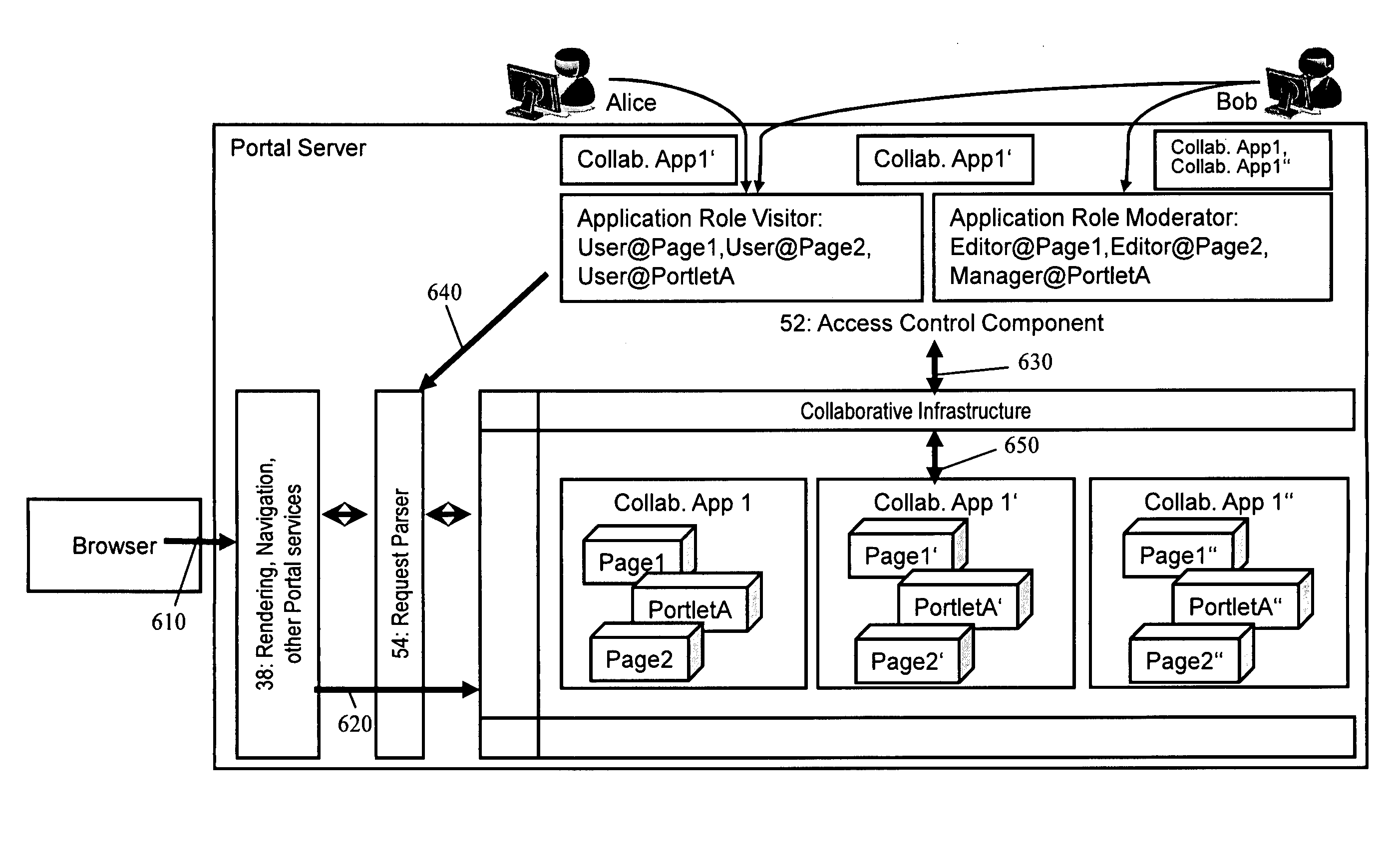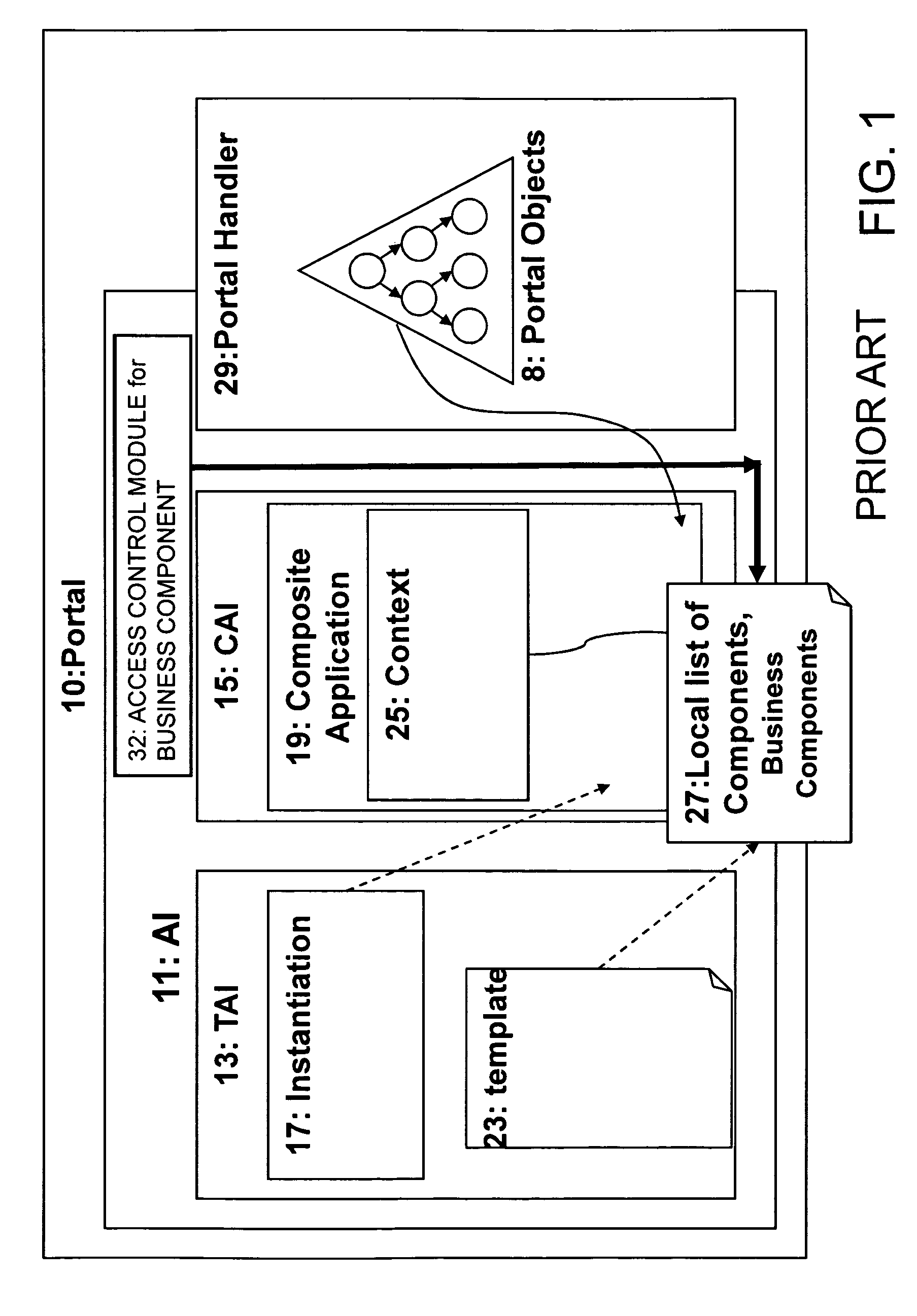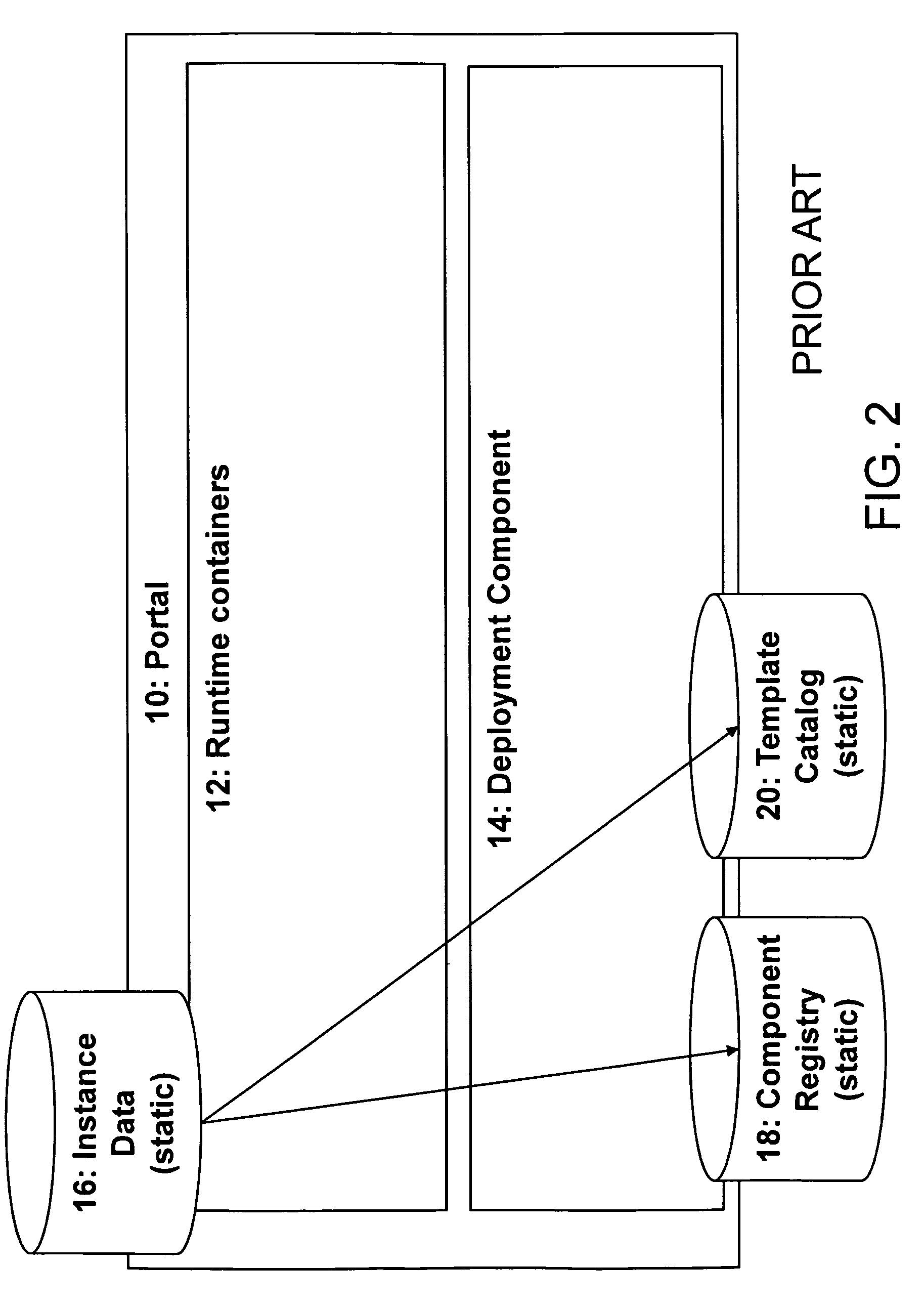Access control on dynamically instantiated portal applications
a dynamically instantiated portal application and access control technology, applied in the field of network portals, can solve the problems of complex management of the overall access rights of those composite applications, unintended or insufficient role assignments, and the inability to define the application roles of dynamically instantiated applications, so as to enhance the ability to administrate and run.
- Summary
- Abstract
- Description
- Claims
- Application Information
AI Technical Summary
Benefits of technology
Problems solved by technology
Method used
Image
Examples
Embodiment Construction
[0055]With general reference to the figures and with special reference now to FIG. 5, according to an embodiment of the inventional method the existing components of prior art are extended as described below.
[0056]A request parser 54 is added as a new component to determine the particular target application instance that is addressed in a current request incoming from a browser. The access control component 52 is extended with programmed logic which implements functionality allowing that each mapping from a user or from a group to an application role is delimited to a particular application instance.
[0057]Thus, the mapping becomes only valid when one of the correct application instance is addressed by an incoming request.
[0058]For example, Bob now has a mapping to the Visitor application role that is only valid for instance 35, and a mapping to the Moderator application role that is valid for the base application 34 and instance 36.
[0059]With reference to FIG. 6 the following intera...
PUM
 Login to View More
Login to View More Abstract
Description
Claims
Application Information
 Login to View More
Login to View More - R&D
- Intellectual Property
- Life Sciences
- Materials
- Tech Scout
- Unparalleled Data Quality
- Higher Quality Content
- 60% Fewer Hallucinations
Browse by: Latest US Patents, China's latest patents, Technical Efficacy Thesaurus, Application Domain, Technology Topic, Popular Technical Reports.
© 2025 PatSnap. All rights reserved.Legal|Privacy policy|Modern Slavery Act Transparency Statement|Sitemap|About US| Contact US: help@patsnap.com



